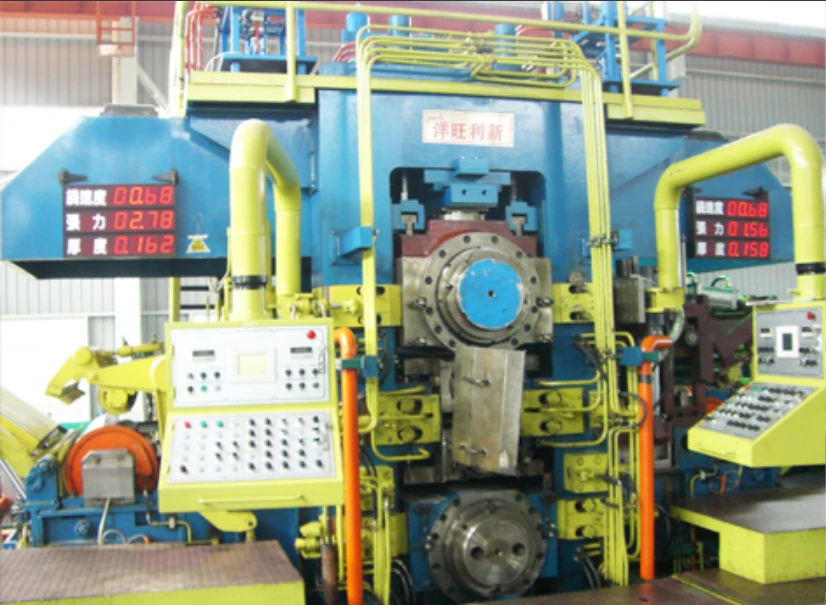
Temper Rolling Mill: Precision Flatness & Surface Finish
A Field Note on the Temper Rolling Mill: What Buyers Quietly Ask
Steel customers rarely talk about it on LinkedIn, but the last 1–2% of thickness reduction can make or break downstream yield. That’s where a Temper Rolling Mill (often called a temper/skin-pass line) earns its keep. In practice, it removes yield-point elongation, stabilizes the grain, and gives the coil a predictable surface topography so your press shop doesn’t fight orange peel or Lüders bands.
What it actually does (and why it matters)
- Eliminates yield terrace; improves deep-draw performance and formability.
- Tunes surface roughness (Ra) for paintability, adhesion, and lube retention.
- Improves flatness/straightness; cuts coil set. Operators sleep better.
- Soft reduction to nudge thickness and mechanical properties when needed.
Origin note: the Temper Mill discussed here is engineered in Beijing (No.1518, LAR Valley Int’l, Guang’anmen Avenue, Xicheng District, 100055). I visited once; tidy shop floor, lots of surface metrology gear—promising sign.
Typical process flow (real-world)
Entry coil → end shear/welder → alkaline cleaning → temper stand (4‑Hi or 6‑Hi) → tension leveler → electrostatic oiler → inspection → exit recoiler. Materials include low-carbon, IF steels, tinplate substrate, some ferritic stainless, even HSS in cautious passes.

Testing and QA checkpoints usually reference ISO 6892‑1 for tensile (proof stress elimination check), ISO 4287/4288 for Ra/Rz, EN 10131 for flatness, plus coil hardness (HV/HB) and off-line cup-draw where automotive is in the mix. Service life? The line frame is ≈20+ years with proper upkeep; work-roll campaigns vary but regrind intervals often run 2–6 weeks depending on steel and Ra targets.
Product specs (typical, project-dependent)
| Parameter | Spec (≈) | Notes |
|---|---|---|
| Input thickness | 0.2–3.0 mm | Application-specific |
| Width | 600–1,850 mm | Wider lines on request |
| Line speed | 300–1,200 m/min | Depends on Ra, yield strength |
| Temper reduction | 0.5–2.0% | Soft reduction possible |
| Surface roughness | Ra 0.3–2.5 μm | Shot/EDT roll textures |
| Flatness | ≤ 8 I-units (around) | Per EN 10131 methods |
Where it shines
Automotive body and chassis, white goods panels, crown caps/tinplate, construction cladding, tube strip. Many customers say the biggest win is consistency—press-room feedback gets… quieter. Which is good.
Vendor snapshot (short list)
| Vendor | Edge | Certs | Lead Time |
|---|---|---|---|
| YWLX (Beijing) | Strong Ra control, flexible upgrades | ISO 9001; CE on subsystems | ≈ 6–10 months |
| EU Maker M | High automation, deep analytics | ISO 9001/14001 | ≈ 10–14 months |
| Domestic S | Cost-effective, standard configs | ISO 9001 | ≈ 5–8 months |
Customization & controls
Options I’ve seen work well: 6‑Hi stand for harder grades, EDT texturing, laser flatness gauge, automatic roll changing, closed-loop elongation control, vision surface inspection, enhanced oiler for anti-fingerprint films. Integration with MES/Level 2 brings better coil genealogy and traceable Ra/elongation data—auditors love that.
Case notes and test data
A Southeast Asia line processing 0.6–1.2 mm IF steel reported elimination of YPE with temper reductions of 0.8–1.2%; elongation uniformity improved ≈2–4%, Ra held at 1.1 ± 0.2 μm (ISO 4287). Downstream rejection dropped by ~38% in the first quarter. To be honest, that’s better than I expected.
Industry trends
Three things: higher-speed automation, live flatness/Ra feedback, and eco-fluids with tighter cleanliness specs. Also, more requests to run AHSS grades—with careful roll texture and tension control, a Temper Rolling Mill can handle them, within reason.
Citations
- ASTM A568/A568M – General Requirements for Steel Sheet [astm.org]
- ISO 6892‑1 – Metallic materials — Tensile testing [iso.org]
- ISO 4287/4288 – Surface texture: profile method [iso.org]
- EN 10131 – Cold rolled uncoated low carbon steel flat products — Tolerances [standards bodies]
- AIST – Temper/Skin-Pass Mill Technology Overviews [aist.org]
-
YWLX’s 1450mm Six-Hi Reversing Mill Goes Live in BangladeshNewsNov.24,2025
-
Adjusting Roll Gap in 6Hi Reversing Cold Rolling Mill for Thin StripNewsNov.13,2025
-
Quality Control Standards for Automatic Gauge Control in Strip RollingNewsNov.13,2025
-
Effect of Skin Pass Rolling on Metal DuctilityNewsNov.13,2025
-
Key Components of a Modern TempermillNewsNov.13,2025
-
Common Wear Patterns of Work Roll in Tandem Cold Mill OperationsNewsNov.13,2025
-
Revolutionary Skin Pass Rolling Technology for Enhanced Steel QualityNewsNov.04,2025










